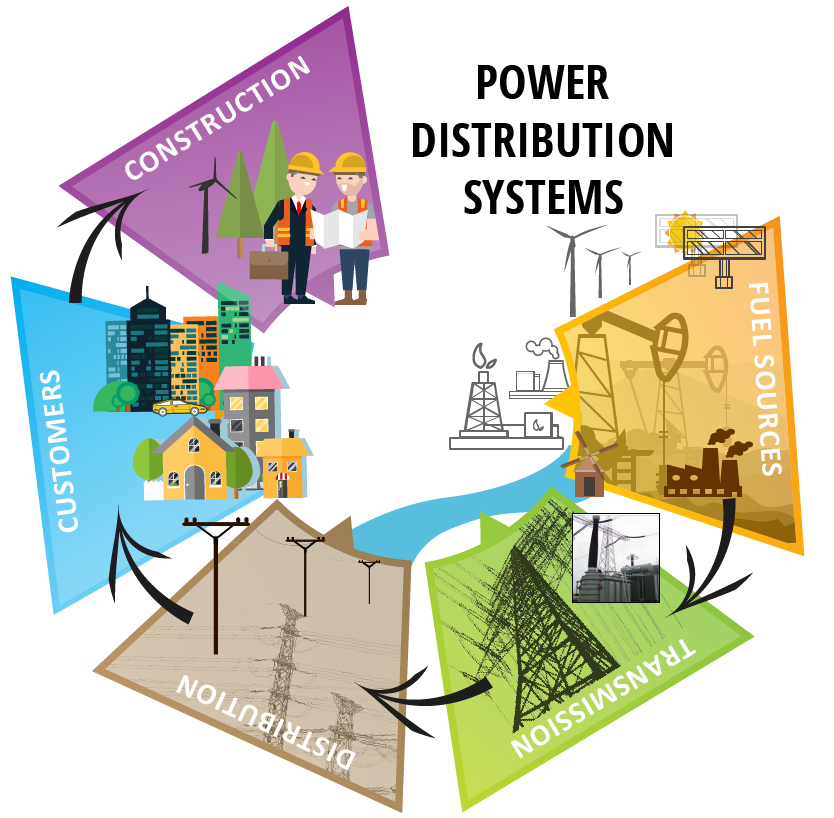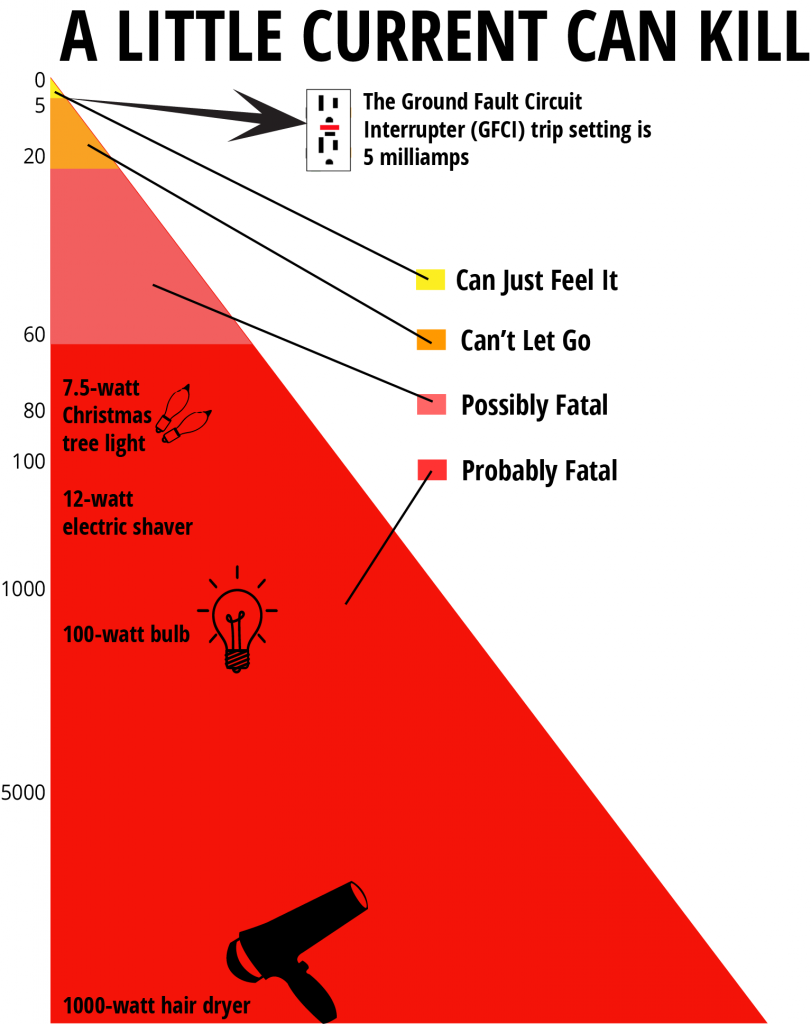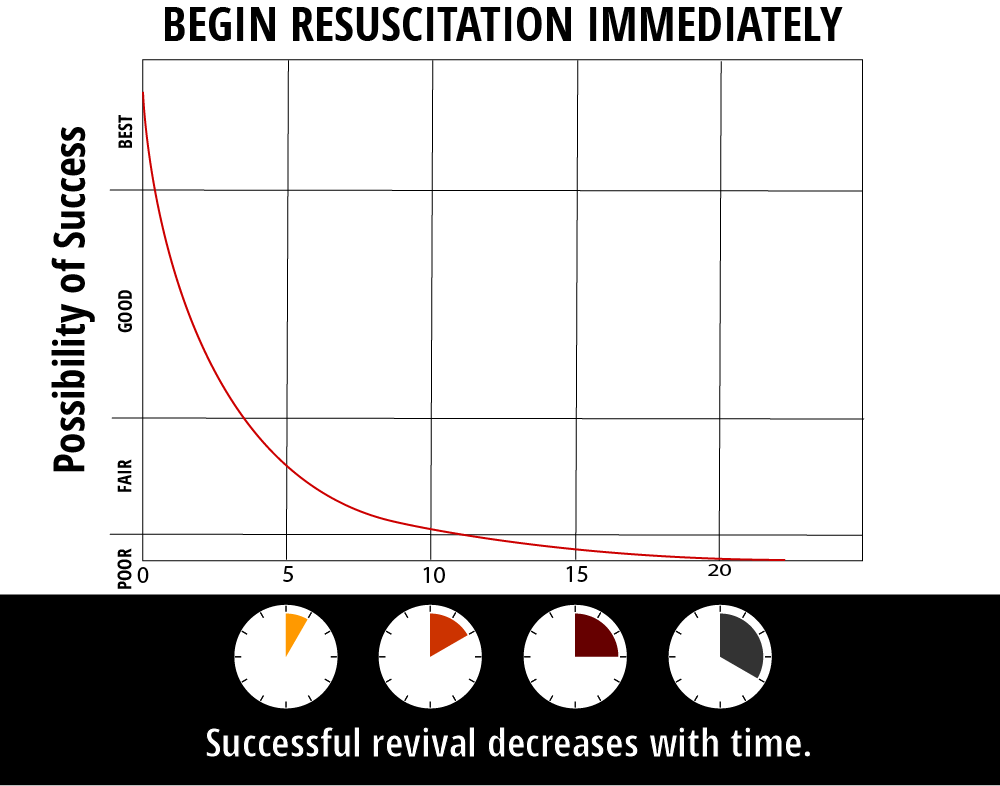Contents
Objectives
Upon completion of this lesson students should be able to:
- Recognize types of electricity circuits.
- Identify the sources of electricity.
- Explain the effects of electricity.
- List types of electrical accidents.
- Explain rescue procedures.
Reading & Lecture
Electrical Terms
Electrical circuit
- An electrical circuit can be compared to a closed water system.

The water analogy - A complete circuit consists of a conductor connecting the power source to the electrical equipment, and another conductor either returning electrons to the power source or serving as a ground. Current cannot flow unless the circuit is complete.
- Electricity takes the path of least resistance. Grounding takes advantage of this by connecting the circuit with the earth, which is a good conductor. If a piece of equipment is grounded, should a short circuit occur the current will travel through the ground wire into the earth. Without this ground wire, should a piece of equipment short circuit, any miner who would touch the equipment would serve as the ground. That is, electrons would travel from the equipment through the body into the earth, and this could result in the miner being electrocuted.
- Insulation materials have high resistance such that electricity is unable to flow along them. Dry wood, rubber, plastic and glass are good insulators. However, these materials lose their insulating ability when they become wet because water is a conductor of electricity.
Circuit Breakers and Fuses
- Fuses and circuit breakers are used to prevent overloading circuits. An overload occurs when so much electricity attempts to travel to the piece of equipment that it would cause the equipment to overheat and possibly blow-up. As the current increases the fuse blows or the circuit breaker trips, interrupting the flow and the equipment thereby shuts down.
- When a circuit is broken, it is usually a result of an overload or a short in a piece of equipment. A qualified person should inspect the equipment before resetting a circuit breaker or replacing a fuse.
Electrical Power Can Be One of Two Types, AC or DC
- DC represents direct current, meaning that the current flows in only one direction. Many kinds of hoists and battery chargers use DC.
Sources of Electricity
- Electric power may be purchased by the mine from a utility company and brought to the mine on transmission lines.
- Another source of electricity is the gas or diesel driven generator. Generators produce voltage or electrical pressure.
- Transformers increase or decrease voltage traveling though lines to match the power requirements of different equipment.
- Batteries are also used to power some equipment med in mines. Batteries vary in physical size and voltage. Some mine batteries contain many cells connected in series to produce up to 300 volts.
Uses of Electricity in Mines
- Water pumps
- Lights
- Battery chargers
- Electric (fives on haulage trucks
- Detonation of explosives
- Conveyor belts
- Shop equipment including hand tools
- Hoists and skips
- Slashers
- Electric locomotives
- Ventilation fans
- Communications
- Air compressors
- Electric drills – auger type
- Electric motors on Gills or cutters
- Crushers and other processing machinery
Power distribution centers are similar to transformers which change the voltage in an AC power cable. These distribution centers have connections to hook-up cables from various pieces of machinery and equipment that run on electricity.

Effects of Electricity on Humans
Humans as Electrical Conductors
- Electric shock occurs when the human becomes part of the electric circuit. Touching a bare electric wire or cable, or a piece of short- circuited equipment would result in shock if your body offered the least resistance to the ground.
- Under most circumstances, a properly attached groundwire provides the path of least resistance to the earth. Contact with a grounded wire can result in a shock, but this would only be slight in nature.
- Whenever working with electrical equipment you should wear protective clothing. Rubber boots and rubber gloves should be in good condition with no holes or tears. Additional protection is provided by insulated platforms, rubber mats and belts, dry timbers, and other dry wooden poles and slats.
Water as a Conductor of Electricity
- The human body is a good conductor of electricity because of the large percentage of water in it.
- Any pool of water through which an exposed electrical conductor passes is just as hazardous as the wire or cable itself. Any miner making contact with the water will result in electrocution unless the miner is wearing rubber boots.
Effects of Electricity on Health
Shock results when people come into contact with electricity. The stronger the current the worse the shock to the electrocuted miner.
- currents of 1 mA or less are safe. You probably couldn’t feel anything at all.
- 1 mA to 8 mA produces a shock but it isn’t very painful. 5 mA is considered the maximum harmless current intensity.
- 8 ml to 15 mA are dangerous currents. it produces a painful shock, but your muscular control would not be effected.
- 15 mA to 20 mA produces a painful shock. Normal muscular control would be overridden because of the strong current, and you probably would not be able to let go of the wire. Your hand muscles would not respond.
- 20 mA to 50 mA results in a very painful shock. Muscles would contract severely. Your respiratory system could be paralyzed and breathing would be very difficult.
- 100 mA to 200 mA causes the heart to stop its beat and it twitches or contracts without control. This is called ventricular fibrillation. This is fatal unless immediate cardiac arrest procedures are followed.
- 200 mA and over leads to severe burns. Muscular contractions become so bad that chest muscles clamp down on the heart and stop it from beating for however long the shock lasts. Death often results.

Electric Burns
As electricity travels through the conductor it generates heat. Electric burns can be caused by touching an overheated conductor, just as you would touch an overheated stove. In some cases enough heat is generated to produce incandescence, such as in a lamp filament, or will result in a ground melting a fuse or setting fire to materials in contact with the over-heated conductor.
Electric Flash
even though the miner may not come into physical contact with an electric arc, the bright flash of light from the arc can cause eye injury due to inflammation of the retina. This kind of light occurs during electric welding, short circuiting, and opening or closing circuits. An electric arc will melt or destroy practically all substances or materials exposed to it, including flesh, muscles, nerves and bones. Contact with arcs results in extensive third-degree bums and often results in death.
Electrical currents should always be treated with respect. Low voltage electricity, as low as 27 volts, is still powerful enough to be lethal when there is low resistance or high current.
Factors Contributing to Electrical Accidents
Unsafe Conditions
- Whenever using rubber boots or gloves for insulation, check for holes or tears through which your skin could contact the wire or cable.
- Make sure your connections to power distribution centers and electrical equipment are tight. Splices should be checked for complete connections.
- Assure that grounds are complete to minimize chances for electrocution. Never take out a round fault wire from a piece of equipment.
Unsafe Acts
- Always lock-out equipment before beginning work on it.
- Working very near an energized conductor may be an unsafe act if it is possible that you could accidentally come into contact with it. Always shut the power off before beginning work near electrical lines and equipment.
- Always be aware of your location relative to energized lines.
- Never use faulty equipment. Electric hand tools should not have frayed wires.
- Only authorized personnel are permitted to work on electrical equipment
- Use insulated protective clothing when working with electrical equipment.
- Before starting motors make sure everyone is clear so they will not be injured or caught from any sudden unexpected movement of the machine.
- Avoid driving mobile equipment over unbridged power conductors or dragging loads (such as barrels or bags) over such unprotected cables.


Performance of Electrical Work
- Only qualified electricians are permitted to work on electrical equipment in the mine.
- All miners are responsible for reporting to their supervisors any malfunctioning electrical equipment. Report any unsafe work condition to your supervisor. Discuss any unsafe act with the miner to reduce hazardous behavior.
Lockout and Tagout Procedures
Whenever work is done on electrical components or equipment, the power to these units must be disconnected or turned off. By locking out the power, the electrician is assured that no one will accidentally flip the power on while he is working on the unit. The disconnects may be blade switches or plug-receptacle combinations. If two mechanics or electricians are working on a piece of equipment, two locks shall be placed on the circuit breaker box. This will prevent one electrician from energizing the circuit and electrocuting the other person. 2. In addition to the lock-out, a tag-out will permit quick visual observation by others that someone is working on a particular unit. This danger tag means that a circuit is dead or de-energized and should not be turned on. Locks and tags should be removed once the work is completed.